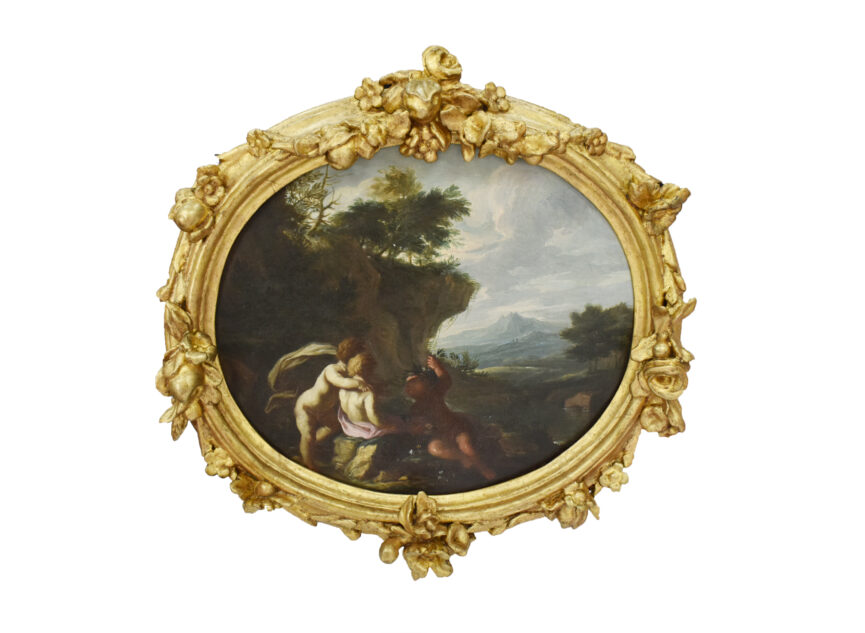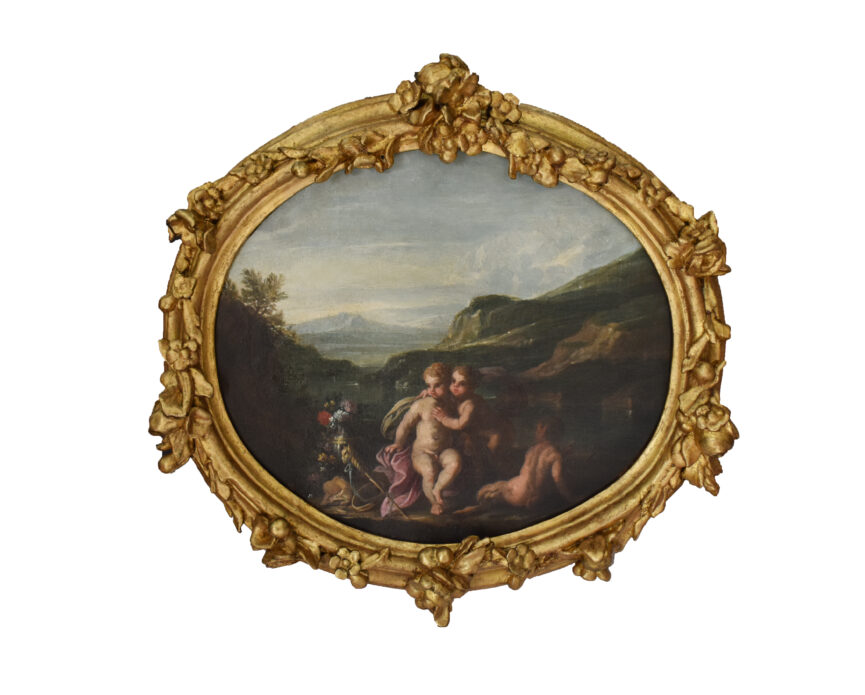Attributed to FILIPPO LAURI
(Rome 1623 - 1694)Putti frolicking in campagna landscapes; a pair
Oil on oval canvas: 13 1/4 x 15 3/8 in. 33.5 x 39 cm. Probably in their original carved wood and gilded baroque frames
Franco Moro, author of the entry on Filippo Lauri in the Macmillan Dictionary of Art, has kindly stated that from high definition images he considers the present works to be “very close to
Filippo Lauri”, though he would like to confirm a full attribution on first-hand inspection of the paintings. He has also considered an artist from the mid-seventeenth century Emilian School, close to Elisabetta Sirani, or Lorenzo Pisanelli.
Filippo Lauri was one of the chief practitioners of the high baroque in seventeenth century Rome, much influenced by Domenichino and Albani. He was patronised by the leading princely families
of the city, including the Farnese and the Borghese, and decorated several of the most important churches, such as Santa Maria della Pace. Among his most important commissions was the
decoration of the Gallery of Alexander VII in the Palazzo del Quirinale, where he executed Gideon and the Golden Fleece and The Sacrifice of Cain and Abel. In all these works he evolved an elegant,
idyllic style which encompassed not only large frescoes but smaller cabinet-sized works for private
collectors. In these the landscapes were sometimes contributed by Gaspard Dughet or Jan Frans
van Bloemen, while flowers and garlands were executed by Mario Nuzzi. It has been noted that
Lauri’s mood of bucolic serenity anticipates the rococo genres of the following century.


